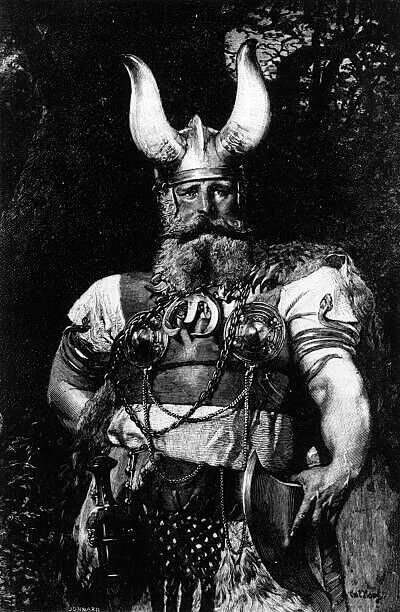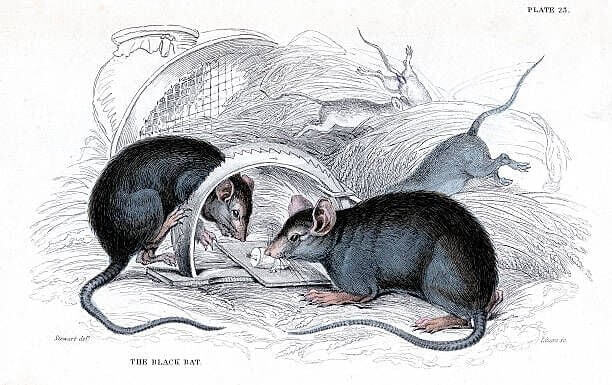What comes to mind when you think of Vikings? If it’s horned helmet-wearing warriors then you’re not alone…but you are wrong. The Vikings were seafaring people from the eighth century and had an extremely unique culture.
As most cultures do, they had a number of practices for different areas of life. However, they differed in that a lot of them revolved around hygiene. So, let’s take a look at some of the most common and surprising
As most cultures do, they had a number of practices for different areas of life. However, they differed in that a lot of them revolved around hygiene. So, let’s take a look at some of the most common and surprising
Looking After Their Skin
Vikings were known for many things, one of them being how they looked after their skin. While it’s common practice to wash our face every day now, it wasn’t back then…especially when you lived as the Vikings did. Nevertheless, every morning without fail, a servant would bring their master a basin of water.

This water would be used to wash his face and his hair. Once he was done washing, his comb would be dipped into the water before running it through his hair. After passing the water onto the next person, the master would blow his nose and spit in the water. Since hygiene was so important to them, we can only assume that the water was changed before it was the next person's turn.
Latrines Inside Their Homes
When it came to relieving themselves, Vikings had to use communal latrines. They were simple toilet systems that usually just consisted of a seat and a hole in the ground. Their simplicity meant that they had to be placed a distance from the Viking longhouses, or homes. However, there has been evidence found supporting the idea that some Vikings were more advanced than others.

Found among the ruins of Stöng was evidence that some Viking community members had latrines in their homes. These latrines differed from the communal ones in that they had trenches that carried the waste away from their home. Since this wasn’t the norm, we’re assuming that these latrines were reserved for people of status.
Teeth Modifications Were Done
Teeth modifications could mean a number of things. However, when talking about teeth modifications with the Vikings, we’re referring to filing grooves into their teeth. Among the remains found at a Scandinavian burial site in 2005 and 2009, archaeologists found teeth that had been grooves filed into them.
Whether these grooves were to intimate their enemies or to show their victories, we don’t know for sure. However, what we do know is that they were done by someone who knew what they were doing. Whatever their reason for doing it, at least they did it properly!
Their Appearance Was Everything
If there’s one thing that the Vikings took seriously, it was their appearance. This probably has something to do with the reason why hygiene was so important to them. They went too far as to consider harming another person's appearance a criminal offense
The Laws of Early Iceland read, "If a man cuts hair from someone's head or makes him dirty anywhere to disgrace him or tears or cuts clothing off him... and for anything a man does to disgrace someone else, however, he sets about it, the penalty in every case is outlawry." Essentially, they would be banished from their community.
Combs Were Meaningful Possessions
Vikings were known for never backing down from a fight. So, it shouldn’t come as a surprise that on their list of prized possessions were various weapons. However, what should come as a surprise is what was at the top of their list…their combs!

Whether their combs were made from wood, ivory, bone, or antler, the owner was able to customize and decorate it themselves. When the Vikings traveled, their combs were often kept in wooden boxes to protect their teeth. The Vikings looked after their combs the way that we do expensive jewelry so you can only imagine the sadness they felt when one of their teeth broke.
Staying Well-Groomed Was a Top Priority
During the eighth century, the Vikings lived in some of Scandinavia’s harshest lands. Trying to survive the elements was hard enough without having to worry about personal hygiene. However, somehow, the Vikings managed to do both.

The more digging that’s done, the more artifacts resembling modern-day grooming tools are uncovered. It seemed that the Vikings made tools like tweezers and ear cleaners from animal bones and antlers. The fact that they worried about the state of their hygiene to that extent is both surprising and extremely interesting.
Laid to Rest With Their Tools
Combs held special importance to Vikings and were arguably one of their most prized possessions. However, their grooming kits were a close second. These hand-crafted tools were usually worn around their necks or attached elsewhere on their person, ensuring easy access whenever they were needed.
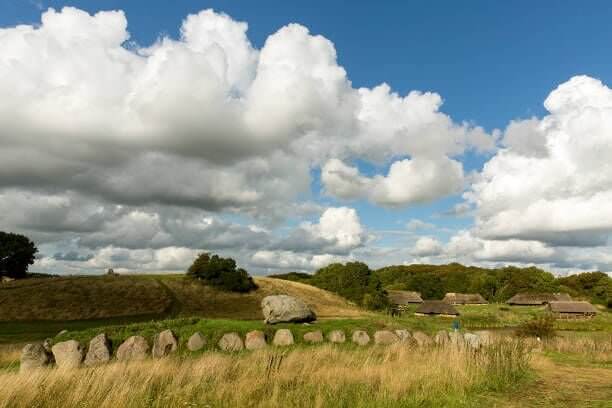
When a Viking passed away, they were laid to rest with some of their meaningful belongings, weapons, and of course, their grooming kit. In fact, some of these tools were so important that they were placed in their own special boxes.
Protecting Their Animals No Matter the Cost
When it came to personal space and privacy, the Vikings didn’t have much of it. We mean, how could they when they lived in a longhouse? A longhouse was essentially one long room that was made from woof and roofed with straw and turf. In the middle of the house was where the fire was created for both warmth and cooking.

During the winter months, the Vikings were able to stay warm from their fire and lack of personal space. However, the same couldn’t be said for their livestock who lived outdoors. Instead of allowing them to freeze to death, the Vikings allowed the animals into their living space. While it was in the best interest of the animals, it wasn’t for the people. The animals were alive and well…but so were the parasites and diseases that then spread to the community.
Some Vikings Liked to Keep Their Hands Clean
When it comes to eating, there doesn't seem to be a right or wrong way to do it. In some cultures, eating with your hands is considered normal while in others they use utensils. To the Vikings, it was left up to individual preference.

The Vikings were known for creating tools to help them keep clean and improve their hygiene. While they never had a fork, they did have spoons and knives that were used by some when eating. Similar to their grooming kit, their knives were kept on them at all times. However, this was probably due to the fact that they were used during hunting, grooming, and fighting rather than eating!
They Bathed Once a Week
Did you know that the Vikings were considered one of the cleanest cultures during the Middle Ages? However, this shouldn’t come as a surprise when looking at other cultures’ hygiene levels during this time. To those around them, the Vikings bathed often…with ‘often’ to them meaning once a week.

For the Viking community, Saturdays were extremely important. In line with their emphasis on appearance, each community member would make their way to the nearest lake or stream and bathe. While it was only once a week, it was still more than anyone else.
A Diet That Was Good for Their Teeth
Today, oral hygiene and dental care are pretty high on our priority list. However, during the Middle Ages, it was near the bottom. So, how is it that Vikings had decent oral hygiene if they did nothing to maintain it?

It had nothing to do with what they did and everything to do with what they ate. According to sources, Vikings lived off of foods with less refined sugar. While this helped their teeth last longer, the coarse food did cause considerable wear on their teeth over time.
Hair Was Used to Identify Status
Vikings were big on appearance and their hair was a big part of that. While it may not be today, it was considered normal for men to have long hair during that time. Not only did they have long hair but they looked after it by combing it a number of times throughout the day.

However, their hair wasn’t just there to make them look good, it was also a way of identifying status. While men mostly had long hair, their slaves’ hair would be cut short. While this made them easy to identify, we’re sure that they would’ve loved to have long hair as well!
They Found Ways to Keep Warm
While the Scandinavian summers were warm, their winters were extremely cold! Aside from living in close quarters with one another, the Vikings came up with an innovative way to keep their body temperatures up.

Making use of the resources around them, the Vikings built saunas on top of or near to hot springs. They were typically known as bathhouses and were used as a place of meeting. It was also believed that making people sweat, these saunas had medicinal value. If there weren’t any hot springs near them, they got creative by heating water in large tanks.
Their Hair Needed to Look Neat
The men in the Viking community were known for being hairy men. We know that they took great pride in the hair on their head, but what many don’t know is that they took great pride in the state of their facial hair as well.

In line with their values on appearance, Viking men made sure to trim their facial hair regularly. While they made sure that it was neat, they still tried to maintain the length. They believed that the length of a man’s beard was a sign of both maturity and masculinity.
Hygiene Wasn’t Important When Mourning a Loss
Vikings were known for being strong, but they also weren't afraid to show weakness. When they suffered the loss of a close friend or family member, they grieved in a very public way. While the Vikings took pride in their hygiene and appearance, none of that mattered when they were mourning.

When a Viking was grieving they made it known by not washing their hair or body. Evidence of this is found in a poem that read "His hands he washed not nor his hair combed Till Baldr's bane was borne to the pyre." Being the kind of people that they were, the Vikings didn’t stay in this state forever and would return to their cleaning rituals soon enough.
Everyone Wanted to Be Blonde
The way that the Viking’s hair looked was important…and this included the color. While having blonde hair wasn’t necessary, it was desired. Whether their hair was naturally blonde or not, both men and women tried to get their hair as light as possible.

Believe it or not, people were already bleaching their hair in the Middle Ages. To get their hair as light as possible, Vikings would use a chemical compound called lye. Essentially, this compound was used to bleach their hair. However, this product wasn’t only seen as a way to alter their appearance but also as a way to stay clean. Lye helped to kill lice as well, so the Vikings got lighter hair and clean scalps…sounds like a win-win!
A Task Reserved for Women
When you hear the phrase “a task reserved for women” when talking about the Middle Ages and hygiene, we’re sure that your mind jumps to dirty laundry or dishes almost immediately. However, thankfully this wasn’t the case. While men took care of their facial hair and other bodily hair, washing and trimming the hair on their heads was a woman’s job.

In fact, often it was more than just their job…it was seen as an honor. Remembering that anything to do with appearance and hair was a big deal, you can see how crucial it was to do a good job! While we can’t be certain if wives cut their husband’s hair or if the men went to someone specific, we are certain that it was always a woman.
Having Short Hair Was a Crime
It’s safe to say that the hair on your head, or lack thereof, forms a large part of a person’s appearance. Whether it’s long or short, light or dark, it‘s one of the first things that people notice. However, the thing that people noticed when looking at Viking women was that their hair was always long.

The women, much like the men, spent hours washing and combing their hair. Luckily many of the women loved their long hair because they didn’t have a choice. Believe it or not, it was against the law for Viking women to cut their hair short.
Changing Clothes to Draw Attention
Another big contributing factor to appearance is the clothes that you wear. For the Vikings, their clothes were typically made from wool and linen because of their durability. While keeping warm was important, so was looking good and staying clean.

To stay clean, the Viking women would take loads of dirty laundry down to the nearest stream or lake to be washed. Aside from taking time to wash their clothing, Vikings were also known for wearing more than one outfit in a day. According to John of Wallingford, they would "change their clothes frequently to draw attention to themselves by means of many such frivolous whims."
They Never Ran Out of Toilet Paper
While Viking toilets were communal, it was the individual's duty to bring their own toilet paper. This was because their toilet paper wasn’t the white tissue paper neatly folded onto a roll that we use today. Instead, it was green in color and found growing on trees and rocks.

After much digging, archaeologists found latrine sites with moss inside of them. This not only helped us to find out more about the Viking's behavior but also more about their diet. We’re grateful for the archaeologists but we can’t say for sure whether we’d want to swap places with them.
Up next, the hygiene habits of an era far, far away from the Vikings but no less surprising...
Up next, the hygiene habits of an era far, far away from the Vikings but no less surprising...
35 Strange and Surprising Hygiene Practices of Colonial America
There are certainly many things about the age we live in that aren’t satisfying, but if you take a broader look at history you will see that we have things pretty darn good, and that is especially true when it comes to hygiene. Hygiene practices of the past range from disgusting to weird to shocking, and all of that was certainly true of colonial America. Let’s take a look at 35 hygiene practices from early on in our nation’s history.

People Bathed by Using Wet Cloths
Today when we want to get clean, we bathe under a stream of running water, a luxury that only people who lived near waterfalls had in the past. Clean water was not nearly as abundant as it is today, and in the colonial era there was no plumbing, so bathing went very differently back then. Instead of a bath or shower as we know it, people simply use wet cloths to get their skin clean of dirt.

Kids did get fuller baths, though the idea behind it was to harden them rather than it was to clean them. All in all, people who are used to a nice warm shower or bath every day are in for a rude awakening if they travel back in time and are forced to never really have a proper bath or shower unless they live near a waterfall, but don’t expect hot water.
Where Did They Go When They Had to Go?
One thing that piques our curiosity when we hear about how they had no plumbing back then is where people would get when they had to…go. Disposing of human waste is something every society has had to deal with, and there were many solutions that people came up with before our modern systems of plumbing and sewage. One solution was outhouses, which were common for houses in colonial America.

Another solution was chamber pots. The gross thing about these is that they were emptying by tossing out their contents from the window, both solid and liquid. Without proper disposal of excrement, many bodies of water became contaminated, and diseases were spread because of it. There may be a lot of unnecessary deaths in our world today, but at least it largely isn’t because of diseases spread through excrement.
Tool Pick Used for Cleaning Your Ears and Teeth
Imagine a two-in-one earbud and toothpick, and imagine it is a fancy tool with an elaborate design made out of silver. That’s exactly what this is, and the multipurpose tool features a pick on one end and a scoop at the other. In addition to ears and teeth, this 17th-century piece can also assist you in cleaning your nails and other parts of your body.

It is cleverly designed, and it likely really came in handy in a world where we didn’t have plenty of disposable objects such as toothpicks and q-tips. This would be especially good for someone traveling as they wouldn’t have had space to fit so many things. It was also likely quite a luxury item, as revealed by its design and the use of silver.
A Hairy Situation
Today, how many upper-class men wear wigs? Certainly, some do, but it is not very common. However, back in the day, it was common, and it was not hidden either, with the wigs being obvious to anyone who even looks at a painting from that era. The purpose of wigs back then was because lice were rampant, so it made sense to shave your head.

The wigs would be fashioned out of animal fur, and they would be treated using various products such as pomade. However, this just attracted more bugs to them. Bug phobic people would not have lasted long back then, as there were really no escaping bugs in those days. Of course, the men could have just gone bald, but it was important to keep up with appearances.
One Soap to Rule Them All
Today we have different varieties of soap for every need. Hair, hands, body, and face all get a different soap, as do floors, countertops, toilets, dishes, and laundry. While you may want a more or less harsh soap depending on what you are cleaning, soap is soap and theoretically, a good soap could be multipurpose. This is how things used to go, where the average person used a lye soap made out of lye, ash, and animal fat to clean everything.

This soap was very harsh, so it was avoided on the body, though bathing wasn’t common anyway. Also, because it was expensive, the common people couldn’t use it freely on whatever they wanted. Because of that, it was reserved for things such as diapers, underwear, aprons, and other clothes that would get very dirty, and it was also used for dishes. Meanwhile, rich people could afford fancy body soaps.
Men Went to Barbers for Shaves, Women Remained Hirsute
The idea that pretty much everyone, men and women, shaves by themselves at home is a quirk of modernity. First off, women likely did not shave much at all at that time. It would have been too dangerous back then to shave at home, with risks of cuts that could lead to infections at a time when hygiene was not so great. Also, the barbershops were men only.

It was not until the late 18th century that men started shaving, though. At that time, the barbers were predominantly men of color, and soon shaving became more and more common to the point where it is ubiquitous and relatively easy to do on your own today. If you go back in time, though, you should pack some razors and shaving cream unless you want to start growing everything out.
The Colonial Era Had Many Unwanted Pests and Insects
We already mentioned the lice that afflicted many people in the colonial era, and that was just the beginning of the pests, insects, and “vermins” that were unavoidable during that time. When Captain John Smith went to Jamestown, he immediately had complaints about what he deemed to be an infestation of “noisy creatures.” Those included cockroaches, flies, lice, and mosquitos.
Hardly a day would go by without settlers finding lice and fleas on their garments. There was even a bug that missionary George Henry Loskiel called “living ashes” for its characteristic stinging hot bites. These bugs were something everyone suffered through, and it was just a fact of life back in those days before bug spray, modern hygiene, and clean environments that wouldn’t attract such creatures in the first place.
You'd Have Died of Dysentery
In modern America, many people only know of dysentery through playing the computer game “Oregon Trail.” The disease still exists, and it is estimated that there are a million people who die of it yearly around the world. However, it is something few people come into contact within the U.S., and you are far more likely to come in contact with memes about dysentery than the infection itself.
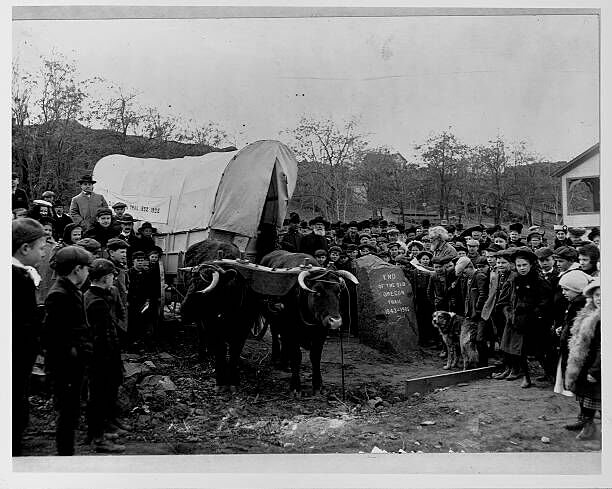
However, in colonial America, it actually was common, as were diseases such as typhoid fever and cholera. This is because of the aforementioned lack of sanitation, with waste spilling out into bodies of water. It was so common and so deadly that roughly two-thirds of George Washington’s army died from these and other diseases. Bacteria and viruses could be as deadly as wars.
Women Got Conflicting Hygiene Advice
Today there is not much thought that goes into whether or not we should bathe. It’s pretty much the norm, and obviously, nobody wants to smell bad. However, back in the day, there were various concerns to deal with, and women got conflicting advice as to whether they should wash.

On one hand, doctors recommended regular washing for women so that their reproductive organs did not develop diseases. This all makes sense, but to some, there were more pressing matters. If you asked Thomas Jefferson, he would have said that it was good for women to have body odor so that they would repel men, who were even more of a threat to women than they are today. Jefferson’s views, which he voiced to his daughter, were common in society at the time.
Families Had to Share Bathwater
Today if two members of the same family take a bath one after another, they would empty the bath and fill it up with new water rather than reusing the water the previous person bathed in. However, when water was a more scarce resource and needed to be conserved, that would have been an extravagant waste. Instead, families would just bathe in the same water.

That may sound gross to our modern sensibilities, but keep in mind that they had to get water out of wells and warm it up just to bathe in it. This is why it was normal to take a bath just a few times a month. When conserving water is that much of a concern and you go most weeks without any bath at all, you probably won’t mind so much about sharing the water with your family members.
Rich People Used Perfume and Large Robes to Cover up Their Smells
The upper crusts of society may have had the ability to bathe more than the common folk, but still, pretty much everyone bathed around the same amount, with social status not factoring into that. With that said, the rich were still more conscious about how they smelled, and they took steps to hide their bodily odors.

The most obvious way they did this was with perfumes, but they also did it by wearing very large robes. This was a good way to keep their smells hidden, while poorer people could afford neither the perfumes nor the bulky clothes so their smells would waft right out of them. However, nobody was that bothered with this at the time as it was the norm.
Women Wore Clothes That Made It Easier to Use the Bathroom
If you look at women’s fashion styles from the colonial era, you will realize that their clothes are pretty hard to get out of. The giant gowns are full of hoops and bustles and if you think about it you will realize it doesn’t make sense for them to have to take everything off whenever they need to run to the toilet.

Thankfully, the clothing was designed with workarounds to these complications. Just as men’s undergarments today have slits that allow them to easily urinate, women’s underwear back then also had a slit in the crotch so they could go right into the pit latrine without having to take their clothes off. This still sounds somewhat stressful, with any miscalculation or miscoordination leading to some rather unpleasant stains, but we’re sure they were able to get the hang of it.
Women Washed Their Hair Once or Twice a Month
How often women wash their hair ranges a lot even today, with women washing it daily, weekly, monthly, or never. There are many arguments for or against washing regularly, but whatever one may decide, it is often in the service of maintaining beautiful hair, which for many women is a source of pride. It shows how little things have changed over the centuries, and even in the colonial days a woman’s hair was something highly valued and that much care and attention was given to.

The standard practice at the time was to only wash it once a month, though a second wash would be in order if the person’s hair was extra oily. Overwashing would strip the hair of its oils and dry out the scalp. While that is even the case today, it was especially true back then as the lye soaps used to wash were very harsh.
Rum Was Used to Conceal Body Odor
We mentioned before that body odor was combated with fragrances and large clothing to hide the scents people had from a lack of bathing. Cologne and perfume were what the rich used, but those who did not have the means to buy those luxury items but also were not content with their scents roaming free had other less expensive options to choose from.

There were cheap powders that were scented which were sold to women. For men, bay rum was a typical solution to cover up odors. Not only did it have the alcohol smell to hide the odor, but it also featured spices that did a good job of masking anything unpleasant. We wonder how rum compares to modern deodorants, and maybe it should make a comeback.
People Cleaned Their Teeth With Sticks, Cloths, and Rinsing
Believe it or not, toothbrushes are a fairly new invention. It was only in the middle of the 18th century that they were invented, but people still practiced oral hygiene. Their methods sound pretty ineffective compared to what we know today, but they worked fairly well even though they are not up to modern standards.
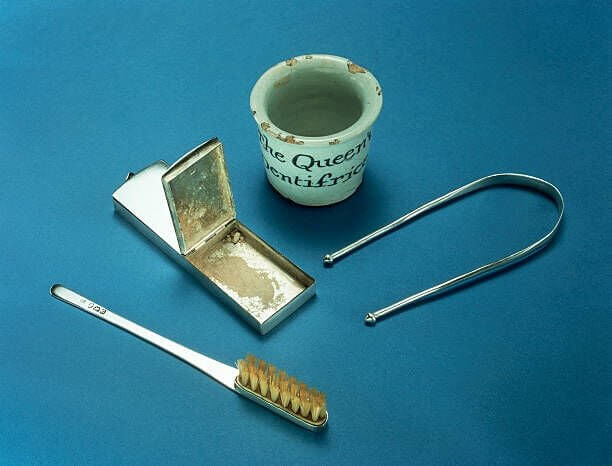
The simplest method was just giving the mouth a pretty rigorous rinse with water. This would get rid of food particles in the mouth as well as extra saliva. A very surprising method that was used was by taking a dumb cloth and rubbing your teeth with it. One practice that sounds strange today but is common in parts of the developing world is chewing on herbal sticks, which acts as both a mouth freshener and as a way of getting dirt off your teeth.
It Was Believed That Direct Water Exposure Could Be Deadly
One false and surprising medical belief back then was that you could drown because water could go through your skin. This sounds insane today, but it is just one of many medical beliefs from past eras that have since been proven false. Because of this, whenever somebody took a bath they would do it very fast, or they would keep their clothes on to prevent drowning.

Thankfully we know better today, and it was actually in the 18th century that we learned that this wasn’t quite the case. In fact, during the Enlightenment, it became known that water and sunlight could be beneficial to your overall health. This changed our understanding of how to maintain a body that is healthy and clean, and we all benefit from this knowledge today.
Bathhouses Were the Health Spas and Experimental Medicine of Their Day
When you hear the word bathhouse, you assume that it served the purpose of actually bathing, which would have made sense in a time when homes were not equipped with the proper facilities to do so. However, when bathhouses became a thing in America in the middle of the 18th century, they were not for washing your body but were largely a way to help rich people to chill out on a long day.

One person to frequent bathhouses back in the 1770s was the governor of Virginia who used them to cool off. The bathhouses were also believed to be medicinal, so they were like a form of experimental medicine. Historically bathhouses were thought to have healing properties, which is why they are all over Europe going back to the Roman period and are still around today, and they also serve a social function.
They Believed Underwear Soaked Up Your Bodily Impurities
In a very strange belief that is hard to understand when looking back on it, it was thought back then that people’s underwear had the power to soak up the impurities of the body. How this was thought to have worked is hard to comprehend, but being clean and having nice underwear were believed to be correlated, and that was true across different socioeconomic groups.

Showing off a bit of your underwear was even a way that people would signal to others that they were clean and pure. If this all sounds incredibly bizarre, consider another thing that is somewhat on similar lines but is more widely understood, which is the white clothes that clergymen would wear, also signifying purity. Also, in an era where bathing was infrequent, having clean underwear was pretty important.
They Slept Nude So Their Clothes Wouldn’t Dirty the Sheets
Some of the hygiene practices of the colonial era don’t make sense when you break them down, and this is one of them. It was seen as being of the utmost importance to have clean linens, as clean linens meant the body would stay clean. This all holds up, and it is something we practice today. Who wants to lay down in a dirty bed?

However, their concepts of cleanliness don’t hold up to scrutiny. To keep their sheets clean, they would sleep fully nude. They thought it would be unhygienic as well as morally incorrect to sleep with your clothes on, and that the sheets would get dirty if you didn’t. While there is nothing wrong with sleeping nude, there is also nothing wrong with sleeping in clothes, and considering people didn’t bathe much, changing into some night clothes before bed would keep the sheets cleaner than sleeping nude.


